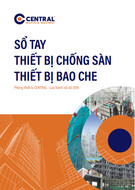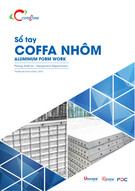
48 Nguyen Thanh Hai
UNIAXIAL COMPRESSION A SOFT GRAIN COMPOSED OF
AGGREGATE PRIMARY PARTICLES
MÔ HÌNH SỐ QUÁ TRÌNH NÉN MỘT TRỤC CỦA HẠT MỀM ĐƯỢC
CẤU THÀNH TỪ TẬP HỢP CÁC HẠT SƠ CẤP
Nguyen Thanh Hai*
The University of Danang - University of Science and Technology, Vietnam
*Corresponding author: nthai@dut.udn.vn
(Received: November 29, 2024; Revised: December 20, 2024; Accepted: December 26, 2024)
DOI: 10.31130/ud-jst.2025.495E
Abstract - Deformable materials such as latex rubber, clays, and
concrete are commonly used in civil construction, that can large
deformation. This paper uses the discrete element method to
simulate a soft grain that can deformed without rupturing. This
soft grain is composed of rigid primary particles with a cohesive
contact law between them. The results showed that rigid primary
particles within the deformable grain can move and rearrange in
response to vertical compression. The soft grain is characterized
by a linear response to small deformations and plastic behavior
beyond, on the other hand, the axial stress as a function of the
cumulative axial deformation for a grain undergoing vertical
compression followed by a discharge from 10% and 30%
deformation.
Tóm tắt - Vật liệu biến dạng hiện nay được áp dụng và sử dụng
phổ biến trong lĩnh vực xây dựng như là: cao su, đất sét hay là bê
tông, trong đó các vật liệu này có khả năng biến dạng lớn. Trong
bài báo này, sử dụng phương pháp phần tử rời rạc để mô phỏng
quá trình biến dạng mà không bị phá hủy của mẫu vật liệu bằng
phương pháp nén một trục theo chiều đứng. Mẫu vật liệu này
được xây dựng trên tập hợp các phần tử nhỏ, được liên kết với
nhau bằng lực dính kết. Kết quả cho thấy, các phần tử nhỏ di
chuyển và sắp xếp các vị trí của nó trong mẫu vật liệu khi chịu
nén. Biến dạng của mẫu hạt mềm là đàn hồi trong giai đoạn đầu
khi biến dạng nhỏ, tiếp sau đó là biến dạng dẽo, mặt khác, ứng
suất dọc trục là một hàm của biến dạng dọc trục tích lũy khi thực
hiện tháo tải ra tại thời điểm mẫu bị biến dạng 10% và 30%.
Key words - Discrete element method; soft grain; large
deformation; cohesive force.
Từ khóa - Phương pháp phần tử rời rạc; hạt biến dạng; biến dạng
lớn; lực dính kết
1. Introduction
The mechanical behavior and the textural properties
partly reflect the weakly deformable character of the
particles in the granular media studied. For example, the
heterogeneous distributions of forces are linked to small
areas of contact between particles (which makes it possible
to assimilate them to point contacts) and to steric
exclusions. Likewise, plastic behavior and memory loss
from the initial state to the critical state result from
rearrangements of particles and energy dissipation through
friction and inelastic collisions. However, there is a large
class of materials with the particularity of being composed
of soft grain, defined as particles which can undergo large
deformations without fracturing [1-3]. Given the known
properties of hard particle granular media, the central
problem in the study of these materials, which we will call
Soft Particle Materials, is to understand to what extent their
properties depend on the deformability of the particles
especially within the limit of large particle deformation and
high compactness [2], [4-7].
The constituent particles of all these materials are macro-
molecular or granular aggregates, with sizes between 1 nm
and 1 mm. They may be divided into four groups according
to their composition and structure: surfactant particles,
polymer-colloid systems, lattice particles, and colloidal-type
particles [3]. On the other hand, granular materials
composed of loose aggregates, and metallic wear particles
are produced by the friction between solid bodies (called
"third body" in tribology) during the hot forming process [8].
Compaction of soft powders has become a well-established
manufacturing process for metals and monolithic polymers,
allowing components to be produced with appropriate
dimensional tolerances [9].
The large deformations of a single soft particle and the
interactions between two particles depend on the nature of
the material and the shape of the particle. The particles
studied are essentially spherical in shape. There are now
several models for large deformations of simple solid
particles such as homogeneous solid spheres, spherical
membranes filled with an incompressible fluid, and elastic
spherical shells as well as the Tatara’s model for rubber
spheres predicts [10], [11], Lin et al., investigated the
deformation of soft spherical particles under vertical
compression [12], and soft glasses of Bonnecaze et al. [3]
However, shells and spherical membranes are more complex
insofar as the deformation depends on the compressive and
bending moduli and therefore on the thickness of the wall
[13]. When it comes to elastoplastic spheres, the plastic
deformation starts at the contact zone's boundaries and
continues as long as the stress in these areas stays at the
plastic threshold. In the Bonnecaze’s model, Soft Glasses are
the assemblage of soft particles in a periodic box. The results
obtained are in good agreement with the experiment.
However, the soft particles can overlap largely between
particles when they contact in that model.
In this paper, we defined a Soft Particle as composed of
an assemblage of the primary particles, which can undergo
large deformations without breaking and interacting thanks























